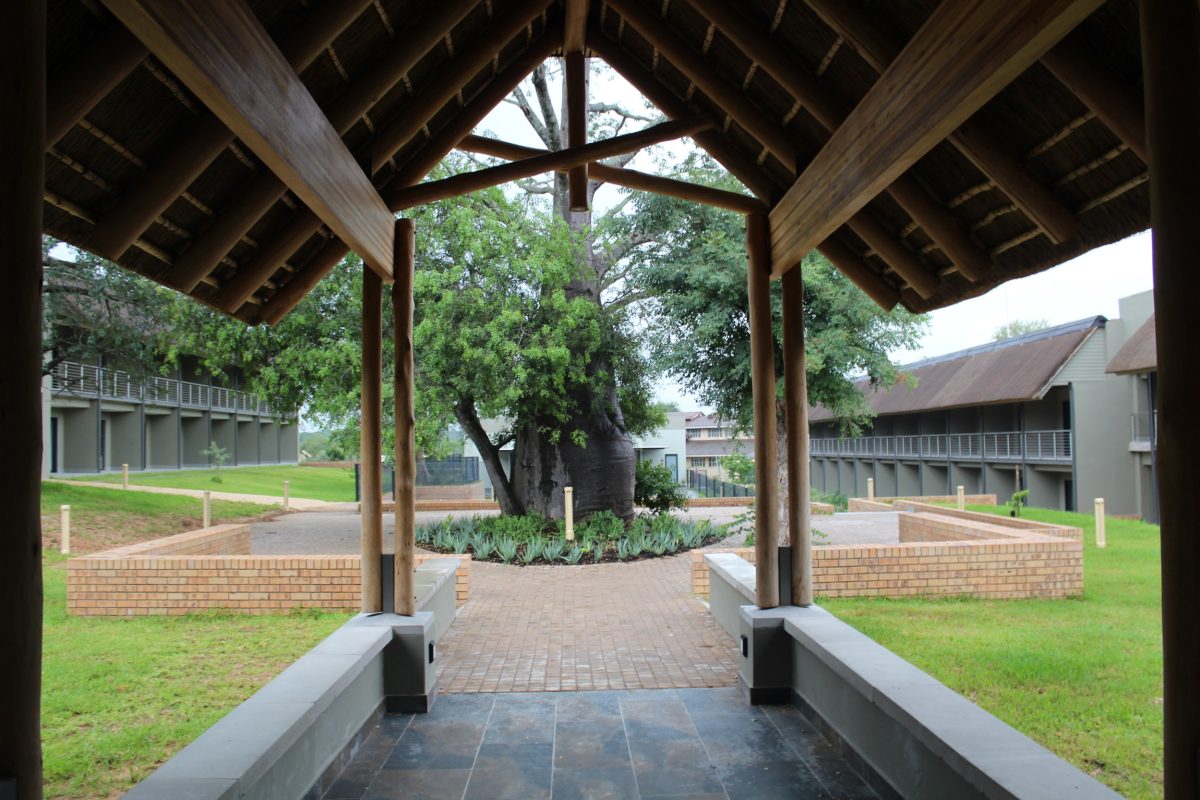
Concor Buildings recently completed a new three-star safari
lodge at Skukuza camp.
Developed by South African National Parks (SANParks), the
development adds a new dimension to the Kruger Park offering, slotting in
between the traditional camp accommodation and the top-end private lodges. Planned
and constructed as a ‘green building’, Skukuza Safari Lodge boasts 128 units,
including 87 standard rooms, 20 family rooms and 13 universal rooms with easy
access for wheelchairs.
Facilities at the lodge include a restaurant, bar, meeting
rooms, gym, pool and laundry, as well as overnight accommodation for 16 staff. With
a focus on environmental care, the lodge has been designed to combine the
Leadership in Energy and Environmental Design (LEED) Green Building Principles
as well as the requirements of the Green Building Council South Africa (GBCSA).
This meant that targets for lower energy usage as well as water savings were
also built into the planning.
Work began in February 2017. Practical completion was
reached in October 2018. According to Concor Buildings’ site agent, Christopher
Martin, the environmental focus was taken on board by the team and applied with
commitment in various ways.
“There were over 50 existing trees on the site, including
two iconic baobabs in pristine condition,” says Martin. “We worked hard to
accommodate important natural resources like these, even redesigning the
parking areas and moving one of the buildings to be more sensitive to the
existing landscape.”
In line with green building requirements, the two-level
structure does not protrude above tree level, minimising its visual impact. Advances
in lightning protection have been harnessed, with integrated protectors being
used in place of the tradition lightning poles that are very tall and generally
unsightly.
Even of lighting is designed to reduce light pollution. Water
efficiency includes rainwater harvesting, grey water treatment and a dual-flush
system in toilets which use recycled water. Low-e coatings on windows allow
guests to enjoy unimpeded views of the natural beauty from indoors, while keeping
out the heat, improving the energy efficiency of the building, reducing the
power required for air conditioning.
Architectural timber is a prominent feature of the lodge,
with laminate saligna beams used for long-span trusses. Thatched roofing and
grass ceilings add to the natural ambience, along with design elements from
local cultures. While making every effort to be non-intrusive, the lodge is a
substantial construction with 5,200 m2 of decking. Over 3,600 m3
of concrete has been poured over 150 tonnes of reinforcement, and 1,8 million
bricks have been laid. Roof thatching measures over 3,600 m2, while
5,000 m2 of sheeting has been used.
In recognition of the authentically wild surroundings of
the lodge, an important use of the concrete was in the bases of the game fence.
The fence has been built all around the lodge, with substantial bases measuring
from 1,5 m by 1,5 m to 1 m by 1 m.
“Waste was carefully managed on site, with the assistance
of a contracted specialist to help us sort and recycle waste,” Martin says. “As
the project progressed, we were also able to contribute towards restoring and
rehabilitating some of the old borrow pits in the area.”
Challenges included the distance between the site and the
towns from which products and services were sourced as well as road speed
restrictions within the Kruger Park.
“Transporting readymix concrete from the batching plant in
Hazyview was a particular challenge,” says Martin. “The distance factor was
compounded by the high ambient day-time temperatures, which could reach 45°C
during our building phase. Adding a retarding admixture allowed us to extend the
concrete’s workability window to two hours.”
The movement of workers between their homes and work was
also an onerous process that required careful management. While Concor Buildings
exceeded the client’s brief by employing 100% of general labour from local
communities, those communities could still be up to 150 km from site. Training
was an important part of the project, upskilling local worker in terms of
safety practice, concrete work, bricklaying, plastering and plumbing.
To combat rhino poaching, security measures in the Kruger
Park have had to be stepped up. These stringent measures affect the movement of
everyone in the park, including construction workers. The necessary checks and
procedures added to transportation cycle times but simply had to be managed by
the team in a responsible way.
Despite the remote location, the project was able to
promote local suppliers by spending more than the required 30% of procurement
value within 150 km of the site, using vendors with B-BBEE Level 3 or higher.
“Given the importance of community participation, we
engaged a community liaison officer from the local area to work with us on our
various initiatives,” Martin says. “In addition to facilitating employment, he also
assisted with community development interventions such as the donation of
salvaged building materials, school sports events, an anti-poaching campaign
and soccer kit donations for a local tournament.”
More information from Tel: +27 (011) 590 5500 / email: i[email protected] / www.concor.co.za

